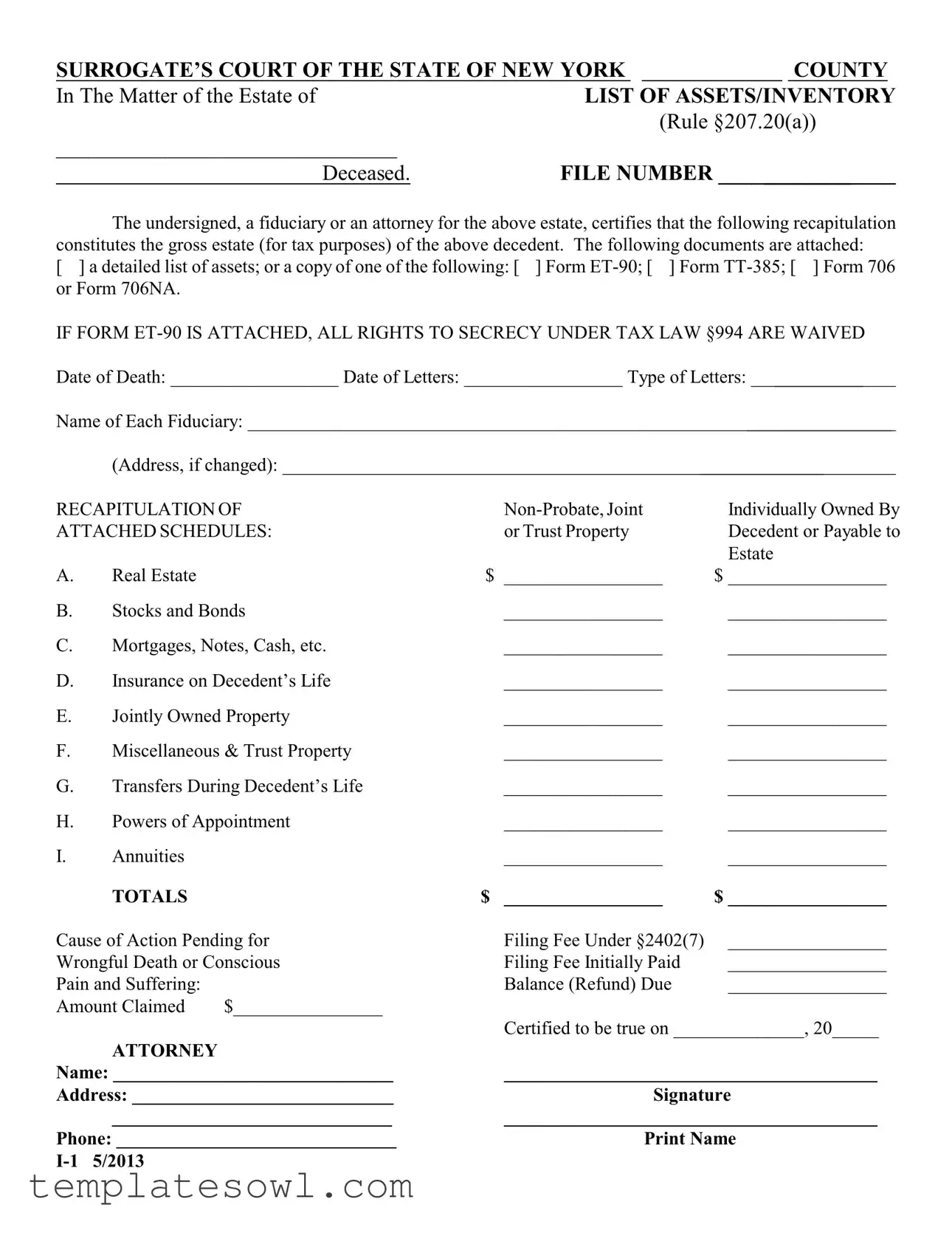What is the purpose of the Court Inventory form?
The Court Inventory form is a critical document used in the Surrogate's Court of New York. It outlines the gross estate of a deceased individual for tax purposes. The form requires the fiduciary or attorney managing the estate to accurately list all assets, including real estate, stocks, bonds, and insurance policies, among others. This inventory helps ensure transparency and correct assessment of the estate's value, which is necessary for tax liability and distribution among heirs.
Who is required to file a Court Inventory form?
This form must be filed by the fiduciary or the attorney representing the estate of the deceased person. The fiduciary is the individual appointed to manage the estate, while the attorney is the legal professional assisting in the process. Both parties share the responsibility of providing accurate information regarding the deceased's assets, ensuring compliance with legal requirements.
What information needs to be included in the Court Inventory form?
The Court Inventory form requires detailed financial information regarding the estate. Key components include a recapitulation of both non-probate and joint properties, as well as individually owned assets. Each category—such as real estate, stocks, bonds, and insurance—must include the date of the individual’s death and the corresponding value of the assets. Additionally, any transfers made during the decedent's life, powers of appointment, and annuities must also be documented.
Are there specific attachments required with the Court Inventory form?
Yes, accompanying documentation is essential when submitting the Court Inventory form. This may include a detailed list of assets or copies of specific tax forms, such as Form ET-90, Form TT-385, or Form 706. Each attachment plays a vital role in substantiating the information presented in the inventory, ensuring that all reported assets are acknowledged during the probate process.
What happens if the Court Inventory form is not filed properly?
If the Court Inventory form is not filed correctly or is missing necessary information, it could lead to complications in the probate process. The Surrogate’s Court may require corrections or additional documentation, delaying the administration of the estate. In some cases, inadequate filing could result in legal repercussions or challenges from creditors or heirs. Therefore, it is vital to ensure that the form is complete and accurate before submission.
